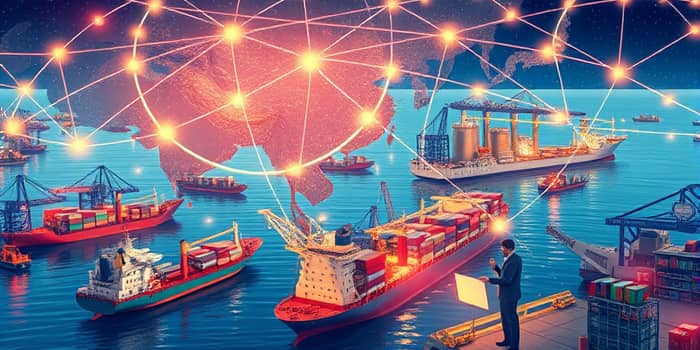
Asia’s rapid economic transformation has been shaped by extensive trade pacts that break down tariffs, quotas, and regulatory barriers. Businesses and governments across the region are collaborating to tap into vast export opportunities, leveraging frameworks that connect markets from Tokyo to Jakarta and from Mumbai to Melbourne. For exporting firms and policymakers alike, understanding these agreements is key to driving sustainable growth and unlocking new avenues of demand.
Trade agreements are not just legal documents: they are engines of opportunity. By working together to eliminate barriers and reduce costs, member states create an environment where goods, services, and investments flow with greater ease. In an era of rising protectionism in some Western economies, Asian nations are reinforcing ties internally, ensuring that losses in one market can be offset by gains in another.
Indeed, Asia stands as the world’s largest trading region, accounting for more than half of global trade volumes. From electronics and textiles to agricultural products and machinery, exporters rely on preferential tariffs and streamlined rules of origin to compete effectively on the world stage. As cross-border collaborations deepen, this economic powerhouse cements its role in shaping global supply chains.
Several flagship agreements illustrate the variety and depth of regional integration in Asia:
Each agreement features provisions that encourage investment, protect intellectual property, and promote simpler customs procedures and standards. Together they form a web of overlapping commitments, enhancing resilience against external shocks such as shifting US-EU trade policies.
Recent data illustrate the tangible impact of these accords. In March 2025, China’s exports soared to US$314 billion, representing a remarkable 12.4% year-on-year increase. Even as US tariffs fluctuated, Chinese firms successfully redirected shipments to ASEAN markets, where exports rose 20.8% in April. Standout gains included Indonesia (+36.8%), Thailand (+27.9%), and Vietnam (+22.5%).
At the same time, trade with Belt & Road partner countries expanded vigorously: exports to Brazil climbed 17.3%, while those to South Africa rose 21.1%. Taiwan’s New Southbound Policy nearly doubled trade with Southeast Asia and Indo-Pacific markets between 2016 and 2022. Across the G20, merchandise exports grew 2.0% in Q1 2025, led by robust performance from Asian exporters such as Japan and India.
Notable success stories highlight the transformative power of market access:
Trade pacts deliver far more than tariff relief. They foster dynamic trade liberalization and investment by establishing clear rules on intellectual property rights, dispute resolution, and digital commerce. In many Asian countries, exporters now enjoy enhanced protection for their patents and trademarks, encouraging higher research and development spending.
Services trade, including tourism, logistics, and education, is increasingly woven into these agreements. With common licensing standards and mutual recognition accords, service providers can expand into neighboring markets, diversifying revenue and creating new growth engines beyond manufactured exports.
The digital economy has emerged as a vital growth frontier. Agreements increasingly include chapters on e-commerce, data flows, and cybersecurity, enabling services firms to cross borders as seamlessly as goods. For exporters, this means new revenue streams in software, financial technology, and professional services, complementing traditional manufacturing outputs.
For businesses looking to harness these opportunities, several practical steps can yield immediate gains:
By proactively aligning production and marketing strategies with the provisions of RCEP, SAFTA, and other pacts, firms can safeguard against fluctuating tariffs and open doors to high-growth markets.
Harness technology such as electronic customs clearance systems and blockchain-based documentation to reduce delays and fraud. Participating in trade facilitation pilot projects can further sharpen competitive edges and build reputations as reliable partners in the global supply chain.
Not all aspects of regional integration proceed smoothly. Geopolitical tensions, such as those between China and Taiwan, can hinder the expansion of trade frameworks. Beijing’s efforts to exclude Taipei from major blocs have limited Taiwan’s free trade deals, constraining its export potential despite its technological prowess.
Moreover, service sectors in certain economies have experienced uneven gains. For example, parts of Japan’s professional services and Korea’s financial industry faced recent declines in cross-border sales as regulatory alignment lagged. Ensuring inclusive benefits across all sectors remains a central challenge for policymakers.
As the RCEP text observes: “Regional trade agreements and arrangements can have a positive effect in accelerating regional and global trade and investment liberalisation, and in strengthening the open, free, and rules-based multilateral trading system.” This sentiment captures the spirit driving Asia’s collaborative momentum, inspiring greater cooperation among policymakers and business communities alike.
Looking ahead, Asian exporters must continue to adapt to a shifting global environment. Key priorities include implementing digital trade facilitation measures that harmonize data regulations, expanding engagement in mega-regional agreements, and deepening value-chain integration through sustainable practices and harmonization of regulations and policies to improve market access and investor confidence.
Asian trade agreements are more than diplomatic milestones: they are catalysts for prosperity. By reducing costs, simplifying regulations, and fostering digital and investment links, these pacts empower exporters to seize emerging opportunities and offset global uncertainties. Businesses that strategically navigate these frameworks will not only boost their bottom line but also contribute to the region’s collective rise on the world stage.
As Asia continues to shape global commerce, stakeholders must remain vigilant in fine-tuning agreements, addressing inequities, and building inclusive platforms for growth. In doing so, they can secure a future where trade uplifts industries, communities, and economies across the continent.
References













